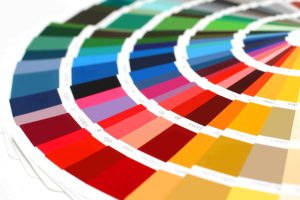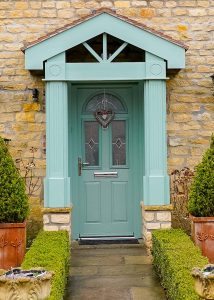From revamping our kitchens, bedrooms and bathrooms, to upgrading our front doors, colour plays a significant role in home improvements – and a common standard for identifying colours is RAL, a system that charts shades using unique codes.
In this blog, we explore what RAL colours are, how they are used, why it’s important to understand their limitations, and how XtremeDoor can help.
What is RAL?

Developed in Germany in the 1920s, RAL is a standardised colour matching system that is now widely used across the world. The system consists of over 2,500 colours, each identified by a unique RAL code and used across various industries, such as architecture, automotive – and glazing.
An advantage of using RAL colours is that they provide a standardised reference for colour communication – RAL codes are universal, and can easily be understood by manufacturers, installers, and their customers, making it easy to achieve colour consistency and accuracy.
Within the glazing industry, where consistent colour reproduction is essential, RAL colours are particularly useful – and they are used to ensure that colours of different components, such as panels, lintels, mullions and top rails, match perfectly.
What are the limitations of RAL colours?
As useful as the RAL system is, it’s important to note that RAL colours are just a snapshot of the entire colour spectrum. Colours are complex and nuanced, and there are countless shades, tones, and variations that simply can’t be accurately represented by RAL codes alone.
Chartwell green is a prime example – a common colour that most would wrongly assume is included in the RAL colour chart.
Installers often find themselves stumped when asked by homeowners for that perfect green – to touch up a forgotten cill or match a door to a foiled frame – the exact RAL shade just doesn’t seem to exist, much to everyone’s frustration.
A quick Google search for Chartwell Green RAL codes will return a few answers, but rather than an exact match, you’re met with suggestions that other people have provided, based on the closest visual matches.
Why can’t I find the exact colour I’m looking for?

The reason why there are so many close matches, but none exact, is down to the foil range from foil specialist Renolit.
Renolit foils are a type of adhesive plastic applied to window and door frames in order to enhance their appearance with both texture and colour.
Available colour options are carefully curated and include recognisable hues such as Chartwell Green, Anthracite Grey, Agate Grey, White and Cream – and it’s Renolit’s colour selection that serves as a benchmark for the entire glazing industry.
For example, if a PVC door manufacturer uses Renolit’s Chartwell colour for their frames, then the door must be painted to match precisely. This also applies to window frames and other products that can’t be foiled.
While Renolit’s colours are of course inspired by existing market shades, adjustments must be made to suit their specific production methods, as is common for many manufacturers.
And at XtremeDoor, we’re very familiar with the problems this can present.
How can XtremeDoor help you?
We’ve taken the time to fully understand the range of Renolit foils, and have invested in matching to these exactly and adding to our standard colour range.
For example, our standard Green, Blue and Red, as well as Duck Egg and Chartwell don’t have an exact RAL match but we can provide spray cans for you to match up trims if you are having a painted frame to match the door.
If you’re matching existing windows and doors to a newly installed composite door, speak to a member of the XtremeDoor team today about exact matches.

